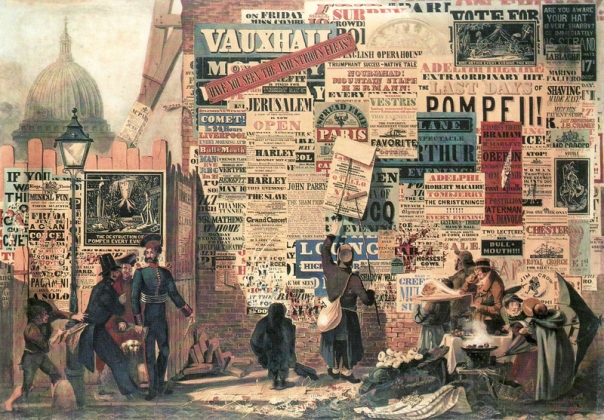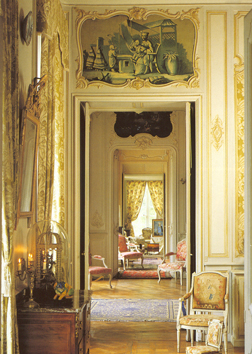The Historians of Eighteenth-Century Art & Architecture (an ASECS affiliate) has just launched Enfilade. Though a serial newsletter primarily intended for HECAA members, Enfilade includes CFPs for architecture and visual culture, exhibition announcements, art auction notes, fellowship information, and “the 18th century in the news.”
Like the appropriately named The Hoarding, a blog “devoted to reporting recent work in British Romantic and Victorian literature,” Enfilade takes its name from an eighteenth-century architectural feature. From The Hoarding‘s about page:
According to the OED, a hoarding is a nineteenth-century term for “a temporary fence made of boards inclosing a building while in course of erection or repair; often used for posting bills and advertisements; hence, any boarding on which bills are posted.”
Where a Victorian “hoarding” seems a layered, visually chaotic space, the “enfilade” emphasizes the linearity of organized space. From Enfilade‘s A Note on the Name:
Enfilade is intended to encapsulate the sense in which various entries are threaded together along a central axis (in this case the order of the postings).Throughout the eighteenth century — in the realm of the ideal plan as well as often enough in life itself — the enfilade served to organize space and vision.
As many panel sessions for the 2010 ASECS conference can attest, there is remarkable interest in the intersections between eighteenth-century culture and digital technologies. Panel sessions range from new understandings of epistolary novels through the lens of blogging, miscroblogging, and email; critical responses to (and solutions for) databases of eighteenth-century texts; and digital tools and strategies for teaching the eighteenth-century. Yet another correspondence seems to be repurposing provocative terms for historical spaces to describe the “new” digital spaces of academic blogging.


